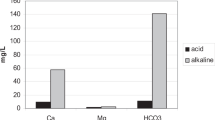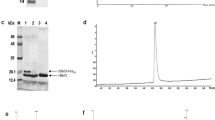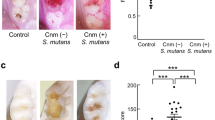Abstract
CARRAGEENAN, a sulphated polygalactose extracted from several seaweeds, has many interesting biological properties. Injected subcutaneously it produces a granuloma in guinea pigs, rats, and rabbits1. It inhibits several proteases2 and exerts some action on serum lipids3,4. The toxic effect of intravenously injected carrageenan was also noted5. We observed a strong inhibition of serum complement by carrageenan in vivo and in vitro6 and this observation prompted us to undertake a detailed examination of its action on guinea pigs, rats and rabbits after intravenous injection. Crude carrageenan (from Marine Colloids Inc., New Bedford, Mass, (we thank Mr. Stoloff for kindly sending a sample of carrageenan)) was dissolved in sterile saline shortly before injection. A 1 per cent solution was prepared and injected in the marginal ear vein of rabbits (2.5–3 kg) and in the penis vein of rats and guinea pigs. Venous blood was taken 3–4 times a day for the determination of serum complement by the 50 per cent hæmolysis technique of Roulier7, total serum proteins by a biuret method, blood urea by a gasometric procedure and plasma fibrinogen by a gravimetric procedure after conversion to fibrin. Urine was also collected for the determination of total protein.
This is a preview of subscription content, access via your institution
Access options
Subscribe to this journal
Receive 51 print issues and online access
$199.00 per year
only $3.90 per issue
Buy this article
- Purchase on Springer Link
- Instant access to full article PDF
Prices may be subject to local taxes which are calculated during checkout
Similar content being viewed by others
References
Robertson, Van B., and Schwarts, B., J. Biol. Chem., 201, 689 (1953).
Hawkins, W. W., and Verna, G. L., J. Lab. Clin. Med., 60, 641 (1962).
Gros, P., and Laudat, P., C.R. Soc. Biol., 157, 510 (1963).
Murata, K., Nature, 191, 189 (1961).
Houck, J. C., Morris, R. D., and Lazaro, E. J., Proc. Soc. Exp. Biol. Med., 96, 528 (1957).
Fray, A., Morard, J. C., and Robert, L., C.R. Soc. Biol. (in the press).
Roulier, P., thèse de Pharmacie (Montpellier, 1951).
Lillie, R. E., Histopathological Technics (Blakiston, Philadelphia, 1948).
McManus, J. A. F., and Mowry, W., Staining Methods, Histologic and Histochemistry (Hoeber, New York, 1960).
Astrup, T., and Mulertz, S., Arch. Biochem. Biophys., 40, 346 (1952).
Frey, A., thèse de Pharmacie, Paris (in preparation).
Reported by Heidelberger in Stoloff, L., Polysaccharides in Biology, Trans. Fourth Conf. Josiah Macy Jr. Foundation, edit. by Springer, G. F., 300 (1958).
Lange, K., and Wenk, E. J., Amer. J. Med. Sci., 228, 448, 454 (1954).
Author information
Authors and Affiliations
Rights and permissions
About this article
Cite this article
MORARD, J., FRAY, A., ABADIE, A. et al. Nature of the Renal Lesions induced by Intravenous Injection of Carrageenan. Nature 202, 401–402 (1964). https://doi.org/10.1038/202401a0
Issue Date:
DOI: https://doi.org/10.1038/202401a0
Comments
By submitting a comment you agree to abide by our Terms and Community Guidelines. If you find something abusive or that does not comply with our terms or guidelines please flag it as inappropriate.



